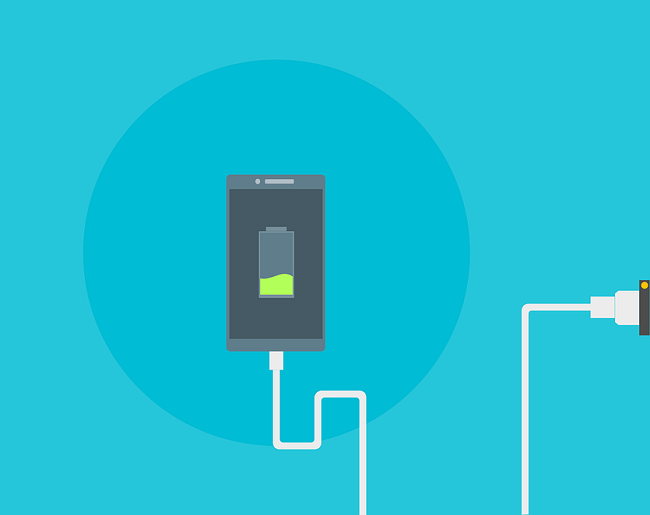You may be able to use your smartphone for double the time as early as 2017 with new tech.
Smartphone tech is moving forward at a lightning speed but mobile battery technology has not managed to keep up. Our phones are an increasingly important and central part of our daily lives. For this reason, they are becoming faster, more powerful and with higher resolution displays. Those features require energy.
Unfortunately, the amount of energy they require is too much for the average smartphone battery life.
Among the main struggles faced by smartphone owners is the need for a better phone battery. Mobile battery technology is falling short of an average user’s usage requirements. As smartphones become more awesome, they are consuming a larger amount of juice in a smaller amount of time. The phone lithium-ion batteries have not increased in capacity at the same rate as phones have increased in need.
 However, new technology under development by SolidEnergy Systems may have the potential to change that. The company has been focused on improving drone battery life, but this tech could also have other applications – smartphones, for example.
However, new technology under development by SolidEnergy Systems may have the potential to change that. The company has been focused on improving drone battery life, but this tech could also have other applications – smartphones, for example.
This mobile battery technology uses lithium metal foil anodes instead of using graphite.
The foil makes a considerable difference. Today’s mobile battery graphite anodes are considerably thicker. In fact, the foil is only 20 percent the thickness of the anodes made from graphite. This is important because it gives batteries more physical space for improving capacity.
SolidEnergy CEO Qichao Hu said this difference will let tomorrow’s batteries hold twice the capacity. Said simply: batteries will be able to fit much more power into the same amount of space. Hu explained that this means twice the capacity in the same physical size battery or the same capacity in a half-size battery.
Moreover, SolidEnergy isn’t just working on a concept anymore. Its prototype battery was unveiled last year. At that time, the prototype was already half the physical size of the battery in an iPhone 6. Yet, it had a 2.0 amp hours capacity. The iPhone 6 battery has a 1.8 amp hours capacity. Therefore, in half the physical space, the mobile battery technology already offered more than twice the capacity.
A new report revealed the lack of protection enterprises are putting into place on employee devices.
MobileIron has released a new report providing insight on the state of mobile security shortfalls in business. Enterprises are inadequately securing employee mobile devices and apps. This leaves them open to a spectrum of cyber threats, says the MobileIron report.
The results of the study were published in the 2016 Q2 Mobile Security and Risk Review.
Fewer than 5 percent of companies have adequately implemented threat detection software. A mere 8 percent of enterprises have enforced updates to operating systems. Failing to take these very basic steps represents considerable mobile security shortfalls, says the report. Moreover, 40 percent of businesses have experienced a loss or theft of mobile devices. That represents an increase of 7 percent over only two quarters beforehand, in Q4 2015.
The insight provided by these statistics in mobile security shortfalls is considered to be quite alarming.
 The main problem is that the number of mobile devices used for business is rising exponentially. Moreover, those devices are being used with a dramatically larger number of mobile apps. At the same time, the number of mobile security threats is growing explosively. The landscape is, therefore, becoming much more dangerous very quickly. However, businesses are not even covering the basics to make sure their data is secure.
The main problem is that the number of mobile devices used for business is rising exponentially. Moreover, those devices are being used with a dramatically larger number of mobile apps. At the same time, the number of mobile security threats is growing explosively. The landscape is, therefore, becoming much more dangerous very quickly. However, businesses are not even covering the basics to make sure their data is secure.
According to MobileIron lead architect, James Plouffe, “The velocity of mobile attacks is increasing, but the latest data shows that enterprises are still not doing the things they could be to protect themselves. This lack of security hygiene demonstrates that enterprises are alarmingly complacent, even when many solutions are readily available.”
This situation is less problematic in the U.K. There, businesses take greater action against mobile security shortfalls than their counterparts from other countries. The research indicated that only 39 percent of U.K. businesses were out of compliance. This was the fewest among all the countries studied. Moreover, they also had the fewest compromised devices at only 4 percent. Furthermore, they experienced the lowest rate (17 percent) of having staff members remove mobile device management software from their smartphones and tablets.
 However, new technology under development by SolidEnergy Systems may have the potential to change that. The company has been focused on improving drone battery life, but this tech could also have other applications – smartphones, for example.
However, new technology under development by SolidEnergy Systems may have the potential to change that. The company has been focused on improving drone battery life, but this tech could also have other applications – smartphones, for example.
 The main problem is that the number of mobile devices used for business is rising exponentially. Moreover, those devices are being used with a dramatically larger
The main problem is that the number of mobile devices used for business is rising exponentially. Moreover, those devices are being used with a dramatically larger 